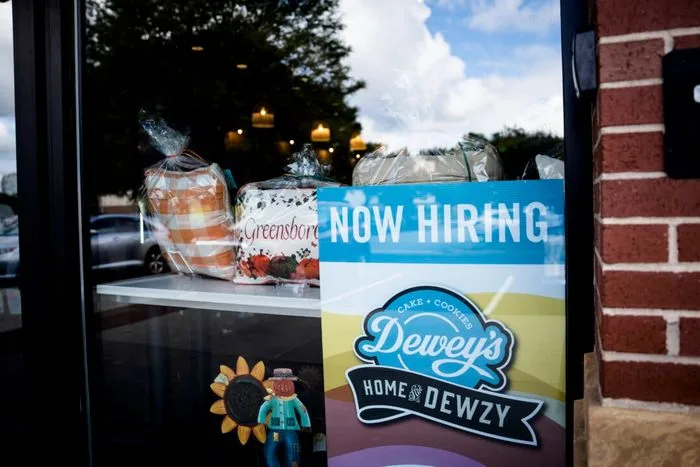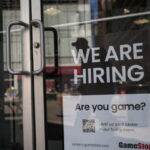By Tom Ozimek
Americans have grown less confident about being able to find a new job if laid off, according to a New York Fed survey, adding to evidence that the once-red-hot labor market is cooling.
The Fed bank’s monthly survey of consumer expectations, released on Sept. 8, showed job-finding confidence falling sharply in August. Respondents expressed a 44.9 percent probability of finding another job after losing their current one, marking a 5.8 point decline from the prior month and the lowest level since the New York Fed started tracking the measure in 2013.
“The decline was broad-based across age, education, and income groups, but it was most pronounced for those with at most a high school education,” Fed analysts wrote.
Other questions in the survey pointed to more stable expectations about the job market, but also hinted at a slowdown. The perceived probability of losing one’s job ticked up by 0.1 percentage point, while the likelihood of voluntarily quitting—a barometer of labor market confidence—fell by the same percentage.
More people said they expect unemployment to be higher in a year, while expectations for pay gains also edged lower.
The Fed survey results come alongside harder data showing hiring has slowed.
Nonfarm payrolls rose by 22,000 in August after an upwardly revised 79,000 in July, while the unemployment rate ticked up to 4.3 percent from 4.2 percent. ADP reported 54,000 private-sector jobs created in August, which was below expectations.
July job vacancies fell by 176,000 to 7.18 million, the first drop below 7.2 million since last September, while the hiring rate came in at 3.3 percent, the lowest since November.
Layoffs in August rose to 85,979, a three-month high, according to the latest report from Challenger, Gray & Christmas.
Higher-frequency indicators point in a similar direction, with initial jobless claims rising to 237,000 in the week ended Aug. 30, the highest since mid-June, and the 4-week average ticked up to 231,000.
New York Fed President John Williams, speaking on Sept. 4, said labor conditions have gradually cooled to pre-pandemic-like levels, citing softer hiring, quits, and vacancies, along with slower wage growth. He said the labor market is “in balance and not adding to inflationary pressures,” and noted payroll gains have slowed amid weaker demand and supply.
Consumers have also turned more cautious.
The University of Michigan’s preliminary August sentiment index fell to 58.6 from 61.7, with buying conditions for durables sliding on price concerns and respondents expecting both inflation and unemployment to worsen. Retail sales rose at a slower 0.5 percent pace in July after a robust 0.9 percent in June, with uneven category performance, and Fitch reported that consumer-spending growth decelerated in the first half of the year compared to the latter part of 2024.
Even so, the broader economy hasn’t stalled.
Real gross domestic product is still tracking moderate growth this quarter, with the Atlanta Fed’s GDPNow model pointing to about 3 percent at an annual rate. Markets, responding to softer jobs data and a cooler labor backdrop, now lean toward a quarter-point Fed rate cut at the Sept. 16–17 meeting, with some chatter about a larger move.
Services—the largest slice of the economy—remain in expansion. The ISM services index rose in August, while S&P Global’s parallel gauge showed solid, if slightly slower, growth. Manufacturing is more mixed, but new orders have picked up.
Inflation has fallen considerably closer to the Fed’s 2 percent target, while longer-run inflation expectations remain steady.






